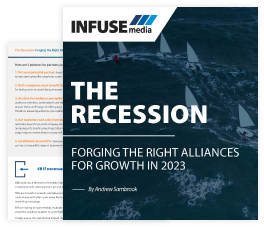Co-marketing, where content distribution is concerned, refers to two or more companies uniting to launch content on an identified platform. This works best with long-form content, such as reports, whitepapers, and eBooks.
With a co-marketing strategy, businesses share their leads and filter them according to qualification criteria. This helps to reduce costs for reputable publishers, such as news websites, and allows each brand to tap into a wider audience than might otherwise be unachievable.
According to 2018 research by Partnerize, 54% of companies said that partnerships drive more than 20% of total company revenue, a statistic that continues to ring true for many. 2020 research by Hubspot also reported that roughly 11% of marketers said that "partnership posts" are their brand's most engaging type of social media content.
An example of co-marketing could be two start-ups that co-write a specialist article, with links to their own assets, for the blog of an industry figure.
Both social distribution and co-marketing methods are simpler and more affordable than traditional content activation. The trade-off is that results can vary dramatically depending on the chosen partner.




















